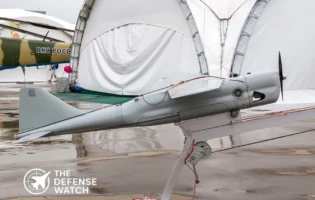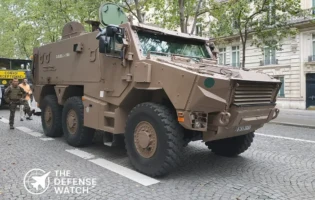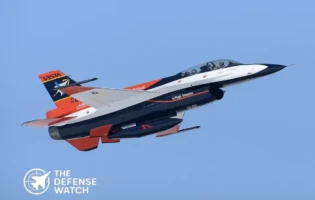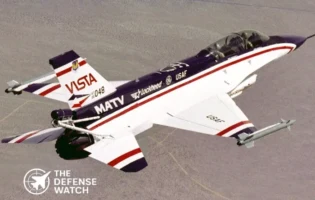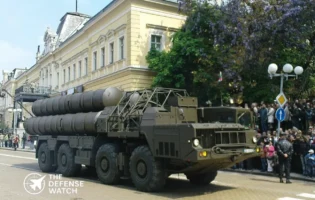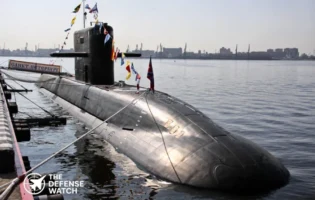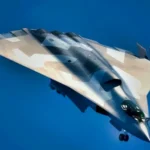- Home
- Catalog
- Naval Warfare Systems
- Seawolf-Class Submarine (SSN-21)
Seawolf-Class Submarine (SSN-21)


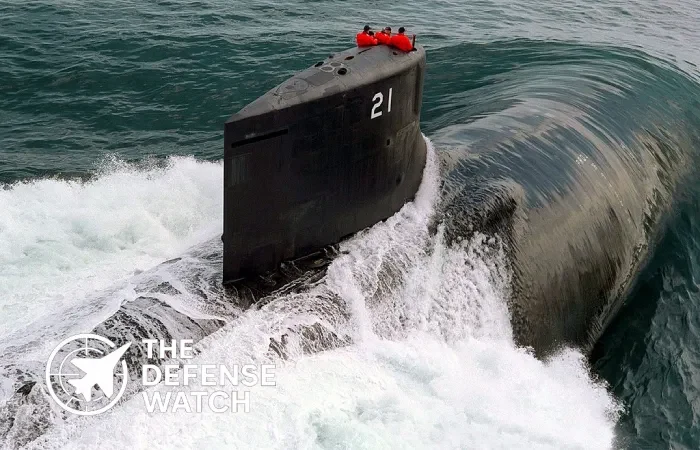

Full Specifications
1. General Information
| System Name | Seawolf-class (SSN-21) |
| Type / Role | Nuclear Attack Submarine |
| Manufacturer | General Dynamics Electric Boat |
| Country of Origin | United States |
| In Service | 1997–Present |
| Year Introduced | 1997 |
| Unit Cost | Approx. $3 billion USD |
| Crew | 140 (officers and enlisted) |
2. Dimensions & Structure
| Length | 353 ft (108 m) |
| Beam (Width) | 40 ft (12 m) |
| Draft | 35 ft (10.7 m) |
| Displacement | 9,150 tons (submerged) |
| Hull Material | HY-100 Steel |
| Deck Configuration | Single Pressure Hull |
3. Performance & Propulsion
| Propulsion Type | Nuclear |
| Engine Model | S6W Reactor |
| Power Output | 45,000 shp |
| Maximum Speed | 35+ knots |
| Range | Unlimited (nuclear) |
| Endurance | 30–90 days |
4. Sensors & Radar Systems
| Primary Radar | None (submarine) |
| Radar Range | N/A |
| Sonar System | AN/BQQ-10, TB-29A Towed Array |
| Electro-Optical / IR System | Yes |
| Electronic Warfare Suite | AN/WLY-1 Countermeasures |
| Fire Control Radar | Mk 2 Fire Control |
5. Weapons & Armament
| Main Gun | None |
| Vertical Launch System (VLS) Cells | None |
| Missiles | UGM-109 Tomahawk |
| Anti-Ship Missiles | Harpoon (optional) |
| Anti-Submarine Torpedoes | Mk-48 ADCAP |
| Close-In Weapon System (CIWS) | None |
| Decoy Systems | Acoustic Countermeasures |
6. Aviation & Support
| Helicopter Capability | No |
| Hangar Capacity | No |
| UAV Operations | Limited |
| Flight Deck Size | N/A |
| Replenishment at Sea | Yes (via tender or port) |
7. Defensive & Electronic Systems
| Countermeasures | Acoustic decoys |
| ECM / ECCM | Yes |
| Missile Defense System | None |
| Combat Management System | BSY-2 |
| Communication Systems | Submarine High Data Rate (HDR) |
8. Operational Information
| Service Branch | United States Navy |
| Primary Operator | U.S. Navy |
| Operational History | Active in Pacific and Arctic regions |
| Notable Feature | Ultra-quiet propulsion and deep-diving capability |
PROS
- Exceptional stealth and noise reduction
- High speed and deep diving capability
- Heavy weapons loadout (up to 50 weapons)
- Advanced sonar and detection systems
- Long endurance from nuclear propulsion
CONS
- Extremely high unit cost
- Limited production (only 3 units)
- Complex maintenance requirements
- Designed for Cold War missions
- Lacks large vertical launch system capacity
Seawolf-Class Nuclear Attack Submarine (SSN-21)
The Seawolf-class represents one of the most advanced and formidable nuclear-powered attack submarines ever built by the United States Navy. Designed during the late Cold War by General Dynamics Electric Boat, the Seawolf-class (SSN-21) was engineered to dominate deep-ocean warfare against the Soviet Union’s most advanced submarines. Though conceived for large-scale underwater conflict, its superior stealth, endurance, and firepower ensure continued relevance in 21st-century naval operations.
Powered by a S6W nuclear reactor, the Seawolf-class boasts extraordinary underwater performance—capable of exceeding 35 knots (40 mph) while remaining nearly undetectable. The submarine’s double-hull titanium structure and advanced sound-dampening technologies make it one of the quietest submarines ever constructed.
Armed with eight 660 mm torpedo tubes, it can deploy up to 50 weapons, including Mk-48 ADCAP torpedoes and UGM-109 Tomahawk cruise missiles. Its combat system integrates advanced sonar arrays, including the BQQ-10 system, capable of detecting distant threats with unmatched precision.
Although initially planned for 29 boats, the program was curtailed after the Cold War, resulting in only three units—USS Seawolf (SSN-21), USS Connecticut (SSN-22), and USS Jimmy Carter (SSN-23). The latter features a multi-mission platform for special operations and undersea intelligence gathering.
The Seawolf-class remains a strategic deep-water deterrent, capable of tracking enemy submarines, launching precision strikes, and supporting covert missions—hallmarks of U.S. maritime supremacy.
Seawolf-Class Price in United State
Each Seawolf-class submarine reportedly costs around $3 billion USD, reflecting its advanced nuclear systems, acoustic quieting, and multi-mission capabilities—making it one of the most expensive yet capable submarines in the world.
Reviews
Disclaimer Note
The information provided on TheDefenseWatch.com is for general informational purposes only. While we strive to ensure the accuracy, completeness, and timeliness of our content regarding defense and aerospace products, technologies, and specifications, we cannot guarantee that all information is 100% accurate or up-to-date due to the evolving nature of military technology and classified data. TheDefenseWatch.com does not warrant the reliability, suitability, or availability of the information for any specific purpose. Users are advised to consult official sources, such as manufacturers, government publications, or defense agencies, for precise and verified data before making decisions based on our content. We are not affiliated with any defense manufacturers, governments, or military organizations mentioned. Opinions, reviews, and ratings reflect expert analysis but are subjective and should not be considered endorsements. TheDefenseWatch.com is not responsible for any errors, omissions, or consequences arising from the use of this website’s content. External links are provided for convenience and do not imply endorsement. TheDefenseWatch.com reserves the right to update or modify content without prior notice. By using this website, you agree to our Privacy & Cookies Policy.








